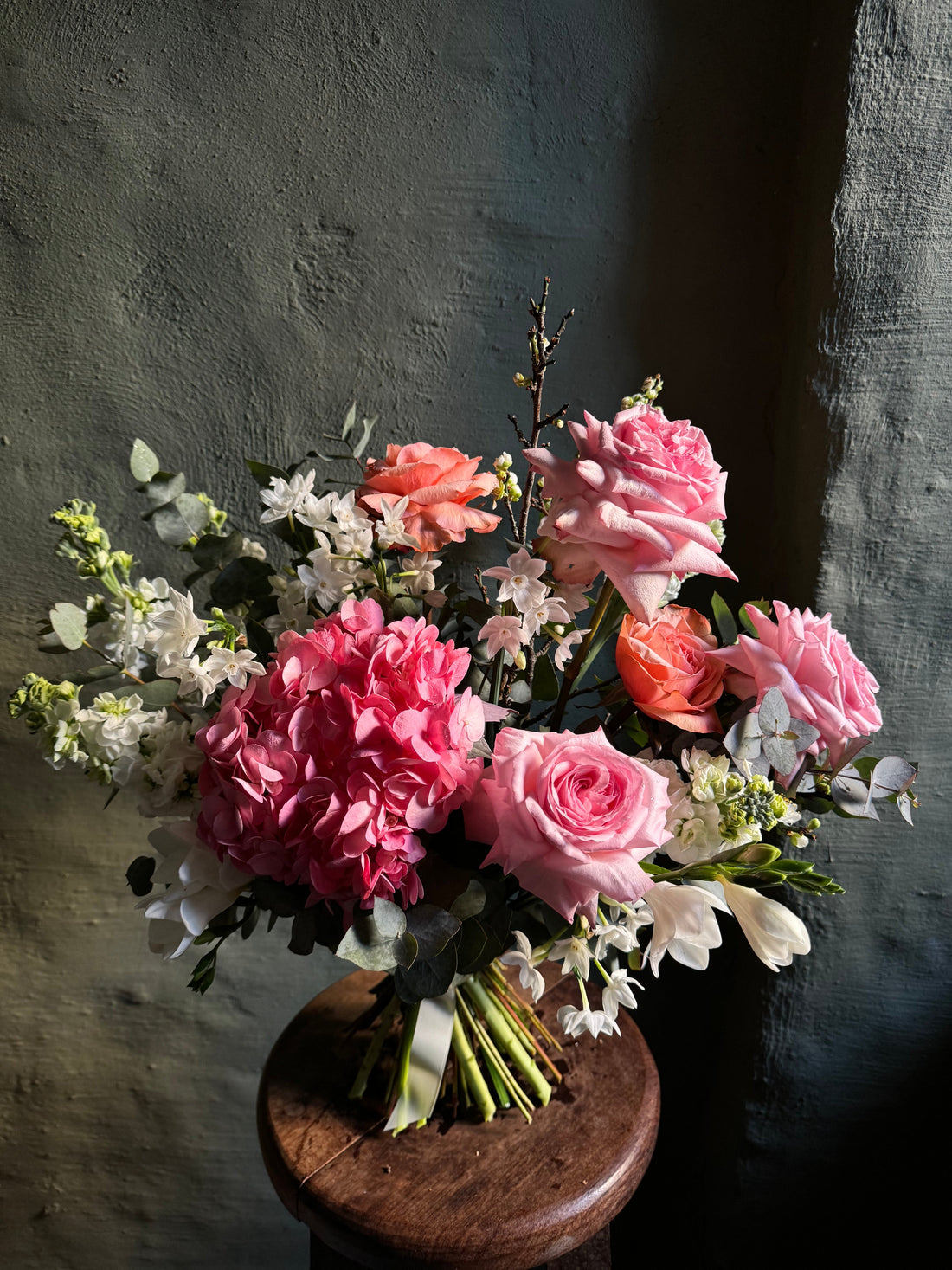
Cut Flower Longevity
How Long Will the Flowers in Your Bouquet Last?
The freshness of cut flowers depends on many factors: time of harvest, temperature, transport conditions, water quality, and care. Natural longevity plays a key role — some varieties simply last longer than others. Seasonal flowers tend to be especially resilient: they’re stronger, brighter, and stay fresh longer after purchase.
We source our flowers from the largest market in Buenos Aires on the very first day of each new shipment — often within hours of being cut, they’re already in our cooler.
International logistics, unlike the local approach we follow, can take up to 5–7 days: harvesting, cooling, packing, air transport, customs. Even the most durable varieties lose part of their vitality in transit — and this is precisely where the local market offers a clear advantage in quality.
Below is an overview of how long the flowers we use most often tend to last outside refrigeration, based on our own observations and experience.
Chrysanthemum — 7–14 days. One of the longest-lasting flowers: holds its shape and color for up to two weeks. Dense petals and a thick, sturdy stem help prevent wilting and rot.
Carnation — 7–12 days. Known for its firm structure and heat tolerance, making it ideal for warm interiors and outdoor events in summer. Low-maintenance, but the stem is fragile and prone to snapping.
Alstroemeria — 5–10 days. Each stem can carry up to 10 blooms, some open, others still unfolding. Open flowers last well. We recommend removing the foliage, as it wilts first and draws water away from the blooms.
Gerbera — 5–10 days. Highly resistant to temperature changes, with firm petals and a strong stem. Retains vibrant color and is easy to care for.
Lily — 6–10 days. One of the most resilient flowers, with up to 7 buds per stem that open gradually.
Gladiolus — 5–10 days. Blooms in stages from bottom to top. As lower flowers fade, they should be trimmed to maintain appearance.
Matthiola (Stock) — 5–10 days. In our experience, it holds up well in a vase but is sensitive to heat and dryness. Blooms from the bottom up — removing wilted florets helps extend its life.
Lisianthus — 5–9 days. Slow to open, with compact buds that stay fresh for days.
Calla Lily — 5–8 days. Dense flower structure means it loses moisture slowly and needs very little water. However, the stem is delicate and can bruise easily.
Narcissus — 5–10 days. Based on our observations, it performs very well. It releases a mucilage when first cut, so we recommend changing the water more frequently in mixed bouquets to avoid affecting other flowers.
Hydrangea — 7–10 days or more. Known for being temperamental, it requires plenty of water and regular misting. With proper care, it can last well beyond 10 days.
Antirrhinum (Snapdragon) — 7–12 days. Excellent longevity, with buds that open gradually and tolerate warmth well.
Spray Rose — from 3 days. Longevity depends on the variety. Small, delicate blooms are sensitive to temperature and handling. The stem is thinner than standard roses, which reduces water uptake. Each stem carries multiple blooms (3–10+), increasing demand and accelerating wilting. With regular water changes, they last longer.
Standard Rose — 5–10 days. Longevity depends on the variety and storage conditions. A thicker, stronger stem helps the rose stay fresh longer.
These lifespans reflect proper care. To learn how to extend the life of your bouquet, you can read our care guide here.
